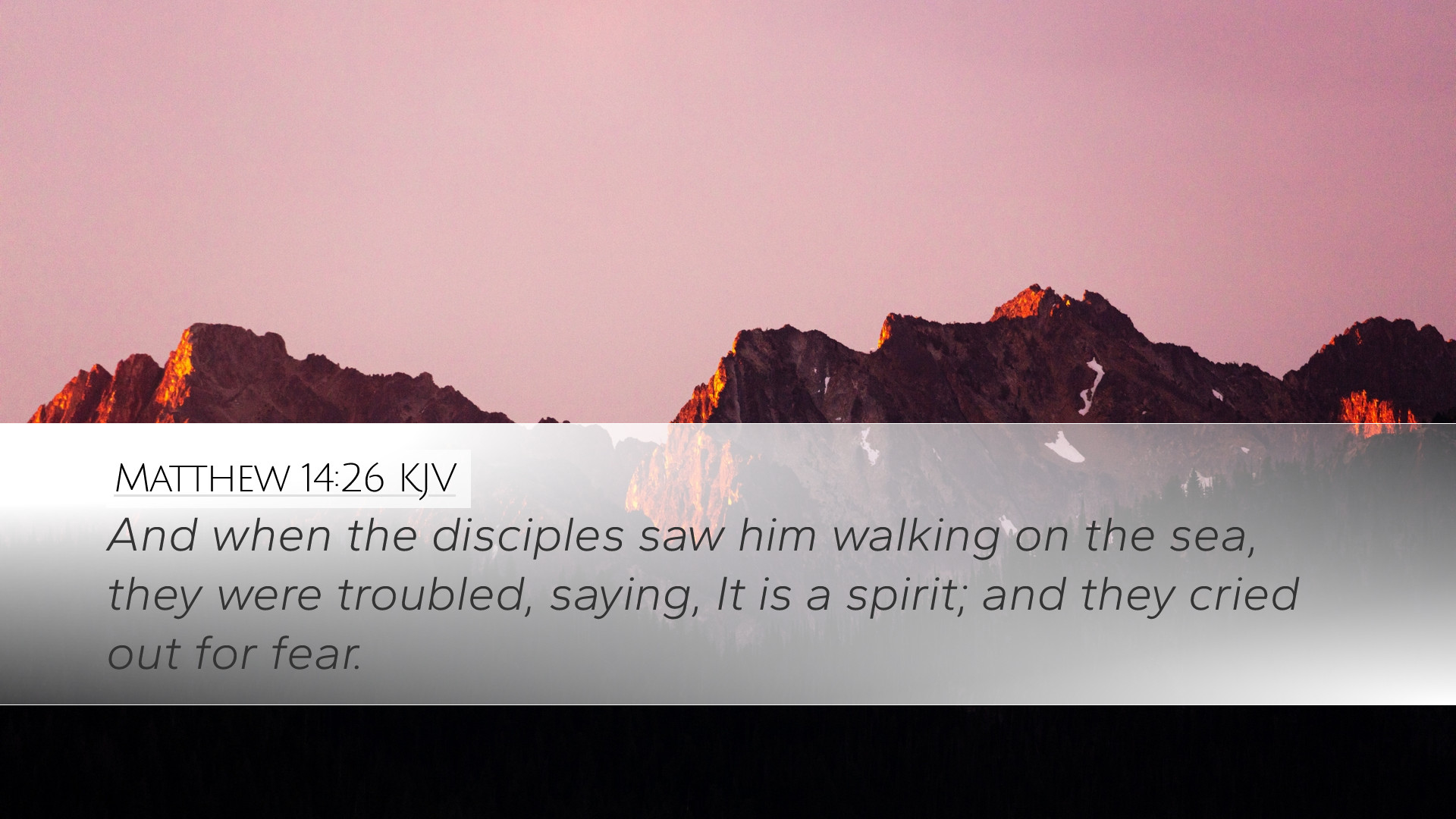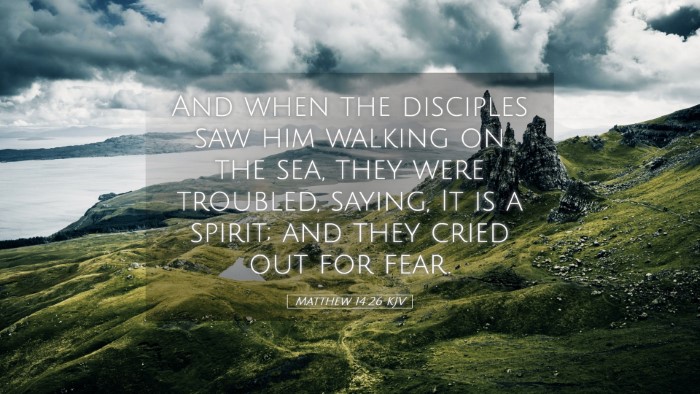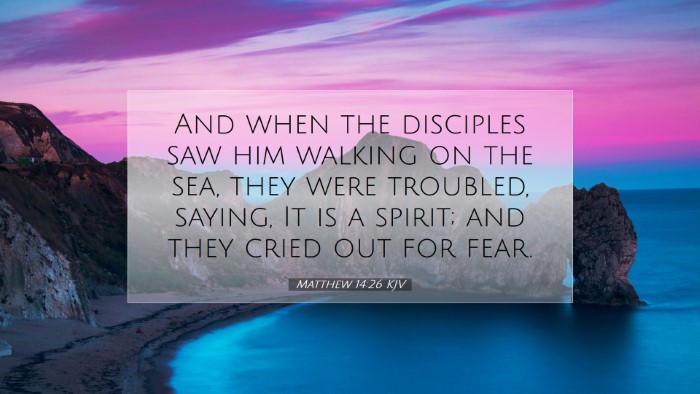Commentary on Matthew 14:26
Verse: "But when the disciples saw him walking on the sea, they were troubled, saying, 'It is a spirit'; and they cried out for fear."
Introduction
This moment in the Gospel of Matthew captures a profound turning point in the disciples' understanding of Jesus' divine nature. The scene is set against the backdrop of distress and fear, as the disciples find themselves alone on the sea, wrestling with their own limitations while witnessing a miraculous act. The commentaries of Matthew Henry, Albert Barnes, and Adam Clarke offer significant insights into this verse, emphasizing themes of fear, recognition, and the revelation of Christ's divinity.
The Context of the Passage
This verse occurs shortly after the miracle of the feeding of the 5,000. Following this remarkable event, Jesus sent the disciples away in a boat while He retreated to pray. The disciples' experience on the stormy sea becomes a profound teaching opportunity, revealing both their human frailty and the divine authority of Christ.
Interpretation and Analysis
1. The Disciples' Fear
Matthew Henry illustrates the disciples' fear as a natural human response to an otherworldly phenomenon. Their exclamation, "It is a spirit," reflects their immediate inclination to explain the inexplicable. Fear often clouds judgment, leading to misinterpretation of the signs around us. The disciples' fear is compounded by their isolation on the sea and the dark circumstances they face, symbolizing our own moments of doubt when faced with life’s storms.
2. The Nature of Christ's Revelation
Albert Barnes highlights the significance of Christ walking on water as a manifestation of His divine nature. This act not only demonstrates His authority over nature but serves to unveil His identity to His disciples. Christ’s actions work to challenge the preconceived notions the disciples have about who He is, as they grapple with recognizing Him in their moment of peril.
3. The Spiritual Implications
Adam Clarke delves into the deeper spiritual implications of this passage, emphasizing that the disciples' fear represents a broader human tendency to doubt God’s presence in times of trouble. Their cry, rooted in fear, signifies a longing for comfort but also an inability to accept the divine within their midst. Clarke suggests that this reflects the journey of faith—where uncertainty often precedes greater revelation.
Theological Themes
- The Sovereignty of Christ:
The act of walking on water is emblematic of Christ’s sovereignty over creation. It serves to reaffirm the belief that Jesus is not merely a teacher or prophet but the very Son of God, who commands the elements.
- Fear and Faith:
This passage starkly contrasts fear with faith. The disciples’ immediate reaction is fear, which is a common human experience when confronted by the unknown. True faith often emerges in acknowledgment of our fears and the recognition of Christ’s power to overcome them.
- Recognition of Christ:
The inability of the disciples to recognize Jesus underscores the challenge believers face in identifying Christ in their lives, especially in difficult situations. This invites reflection on our own spiritual sight and discernment.
Practical Applications
This passage invites deeper contemplation for pastors and theologians on how fear can cloud discernment. It challenges leaders to guide their congregations in recognizing Christ amidst life's storms.
- Addressing Fear:
As spiritual leaders, acknowledging the fears within ourselves and those we shepherd can pave the way for deeper faith and trust in God's providence.
- Encouraging Recognition:
Encouraging congregations to be mindful and alert to Christ’s presence in their lives can transform moments of fear into encounters of faith.
- Integrating Teachings:
This passage serves as an excellent source for teachings on divine providence, helping others to see how God operates even in the darkest of times.
Conclusion
Matthew 14:26 offers profound lessons about the nature of fear, faith, and recognition of Christ's authority. By integrating insights from Matthew Henry, Albert Barnes, and Adam Clarke, we glean a more profound understanding of the human condition in the face of divine power. This passage encourages leaders, students, and scholars alike to reflect not only on the nature of Christ but also on our disposition during trials and tribulations.


